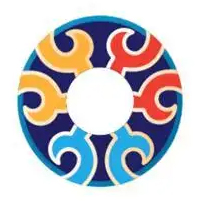Time-honored treasure: Chinese cloisonné.
What is Cloisonné?
Jingtai Blue, also known as Cloisonné, is one of China's famous specialty metal crafts. Its production technique reached its peak during the Jingtai period of the Ming Dynasty. It is a type of porcelain ware made by applying flat copper wire onto a copper base, forming intricate patterns, and then filling the spaces with enamel glaze before firing. It is named "Jingtai Blue" because it was popular during the Jingtai era of the Ming Dynasty and predominantly featured blue color.
Legend of Cloisonné
According to folklore, during the Yuan Dynasty, after a massive fire broke out in the imperial palace, the gemstones and precious metals inside the Hall of Supreme Harmony melted together, forming a precious vase. When this object was presented to the emperor, he issued a decree demanding an identical vase be reproduced within three months. Failure to do so would result in execution for all involved. The artisans were at a loss until they sought the help of the skilled craftsman Li, who created the vase based on an inspired dream. This vase later became known as the "Qibao Yao" and became an art form in the imperial court. During the Jingtai period of the Ming Dynasty, the craftsmanship further improved, and the predominant color used was peacock blue. As a result, it became known as "Jingtai Blue" or "Jingtai Cloisonné."
The Artistic Status of Cloisonné
Cloisonné enamel is an important part of the Chinese royal family and is the main display in the palace hall. According to historical records, during the New Year's Eve dinner in the forty-fourth year of the Qianlong Emperor, only the emperor's tableware was made of cloisonné enamel. Due to its historical significance and exquisite craftsmanship, cloisonné enamel was listed as the first batch of intangible cultural heritage in China in 2006. Taihefang cloisonné enamel is the best artwork to admire, collect, and gift.
Craft Features of Cloisonné Enamel
Cloisonné enamel is a brilliant pearl in the world of arts and crafts, famous for its long history, elegant shapes, bright colors, and magnificent patterns. The production method involves coating the surface of the copper object with various colors of enamel, and then embedding patterns with copper wire or gold and silver wire, followed by high-temperature firing. When taken out of the fire, cloisonné enamel appears black and only reveals its colorful appearance after cooling down.
Ming Dynasty's Jingtai blue has better quality, usually made of purple copper, with ancient-style shapes and deep and realistic colors made from natural mineral glazes. In contrast, Qing Dynasty's Jingtai blue has improved craftsmanship compared to the Ming Dynasty, with thin and delicate bodies, bright and smooth glazes without sandholes. However, the overall level of Jingtai blue in the Republican era is inferior to previous generations, with thin bodies and exaggerated colors.
Nowadays, the level of Jingtai blue craftsmanship has greatly improved, with a variety of shapes and rich decorative patterns. It is not only popular in China, but also a popular gift exchanged with international friends and relatives. However, contemporary people's understanding of Jingtai blue craftsmanship is still relatively limited, only staying in books, and few people have truly appreciated Jingtai blue works.

